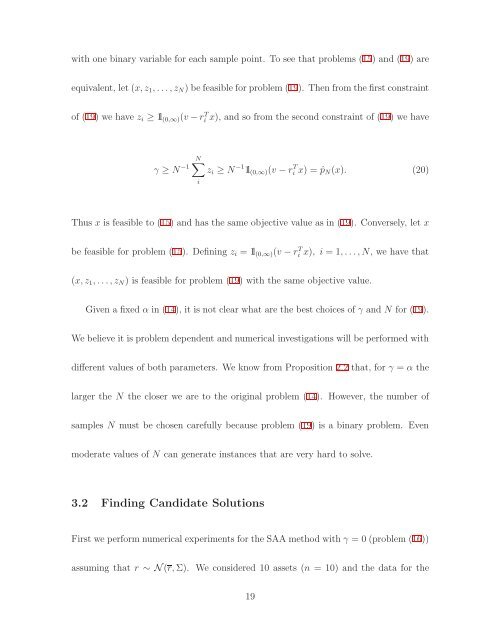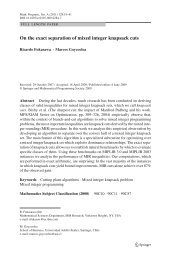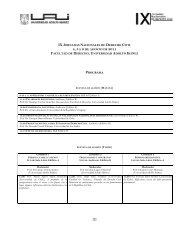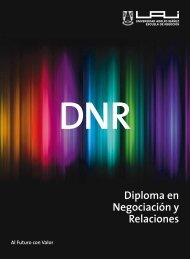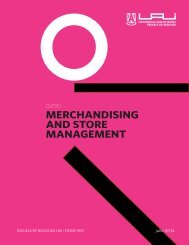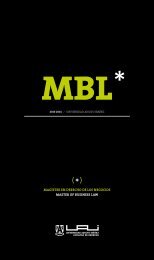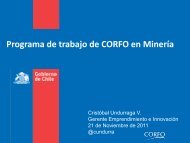Sample Average Approximation Method for Chance Constrained ...
Sample Average Approximation Method for Chance Constrained ...
Sample Average Approximation Method for Chance Constrained ...
- No tags were found...
Create successful ePaper yourself
Turn your PDF publications into a flip-book with our unique Google optimized e-Paper software.
with one binary variable <strong>for</strong> each sample point. To see that problems (15) and (19) areequivalent, let (x, z 1 , . . .,z N ) be feasible <strong>for</strong> problem (19). Then from the first constraintof (19) we have z i ≥ 1l (0,∞) (v −r T ix), and so from the second constraint of (19) we have∑ Nγ ≥ N −1 z i ≥ N −1 1l (0,∞) (v − ri T x) = ˆp N (x). (20)iThus x is feasible to (15) and has the same objective value as in (19). Conversely, let xbe feasible <strong>for</strong> problem (15). Defining z i = 1l (0,∞) (v − r T i x), i = 1, . . .,N, we have that(x, z 1 , . . ., z N ) is feasible <strong>for</strong> problem (19) with the same objective value.Given a fixed α in (14), it is not clear what are the best choices of γ and N <strong>for</strong> (19).We believe it is problem dependent and numerical investigations will be per<strong>for</strong>med withdifferent values of both parameters. We know from Proposition 2.2 that, <strong>for</strong> γ = α thelarger the N the closer we are to the original problem (14). However, the number ofsamples N must be chosen carefully because problem (19) is a binary problem. Evenmoderate values of N can generate instances that are very hard to solve.3.2 Finding Candidate SolutionsFirst we per<strong>for</strong>m numerical experiments <strong>for</strong> the SAA method with γ = 0 (problem (16))assuming that r ∼ N(r, Σ). We considered 10 assets (n = 10) and the data <strong>for</strong> the19


